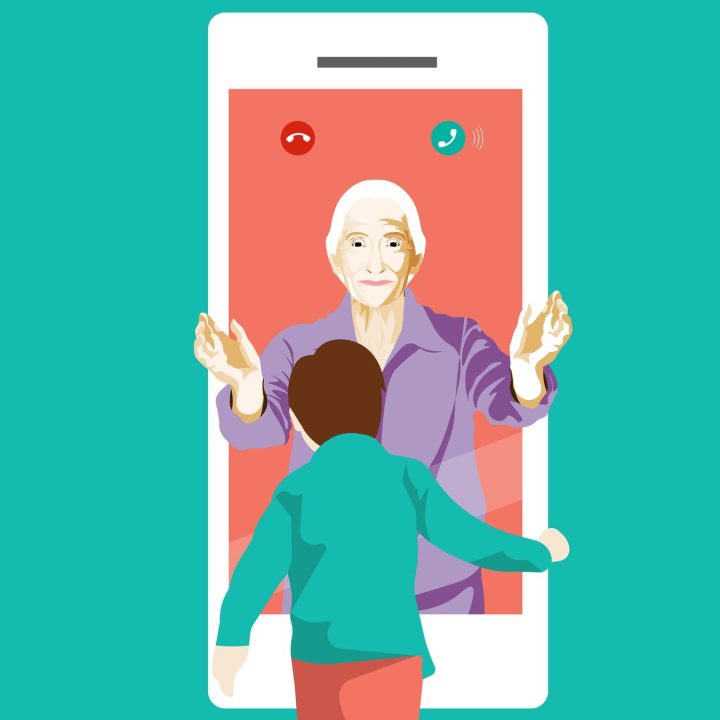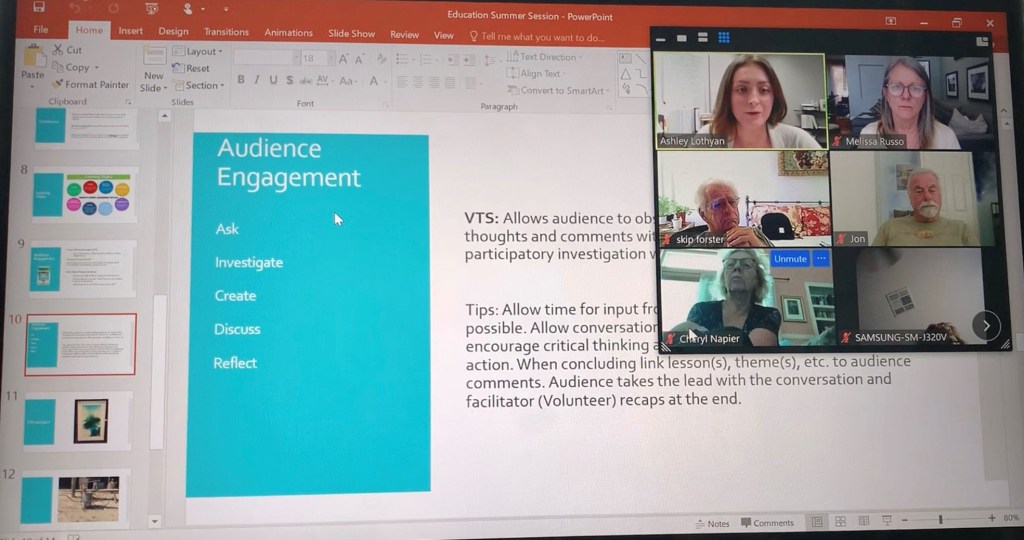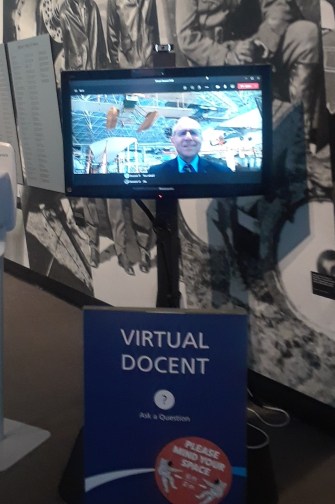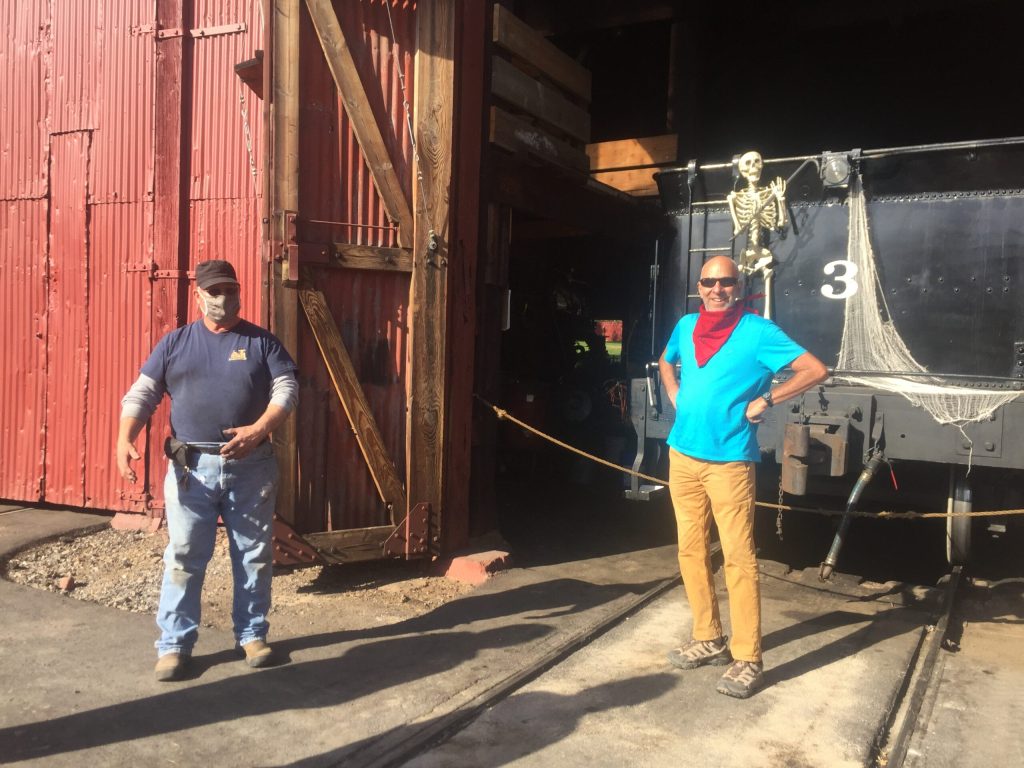
As cases of COVID-19 spike across the country, resulting in more museums suspending operations, what are the implications for older docents and volunteers, especially in regard to ageism and creative aging? In part one of this two-part blog post, Marjorie Schwarzer explored the ethical and strategic issues at play with museum volunteer programs. In this conclusion, she explores how and why some museums are choosing to sustain their older volunteers. More resources for thinking about and engaging museum volunteers of all ages can be found here.
According to a survey conducted by the American Association of Volunteers (AAMV) in Summer 2020, an astonishing 84 percent of museums have suspended their volunteer programs during COVID-19. Last week’s post provided a forceful argument about what museums stand to lose from shuttering these programs, in addition to exposing the inherent ageism behind some museums’ decisions. This post picks up where we left off, describing how three museums in the western United States are bucking the trend by taking a high-touch, empathetic approach to their older volunteers; prioritizing frequent and diverse avenues of communication; and utilizing technology to link volunteers directly to visitors.
The Cave Creek Museum in Cave Creek, Arizona: A High-Touch Community Museum
Cave Creek Museum is one example of an institution that has embraced a high-touch approach to its volunteers. Remington Pettus, the museum’s twenty-four-year-old program coordinator, once volunteered at the museum herself, and describes herself as an outgoing person who loves interacting with people. “When COVID-19 cases started to rise in Arizona, I became really concerned for our older, wonderful volunteers,” she told me. “I surveyed their health concerns. I asked how the museum could assist them at this tumultuous time.” Based on what she heard, Pettus pulled together a number of resources.
“In addition to emailing out our volunteer newsletter, I developed activities like jigsaw puzzles and other activities that could be shared. I also challenged people to reach out to one another. It worked. People started to engage with each other at a level we had never seen before.” One group of older men who’ve volunteered for years—Pettus calls them the “Dream Team”—got to work outdoors, and at a social distance, building hand sanitizer stations and an outdoor gold-panning activity for the museum. The “Dream Team” also learned that another long-time volunteer who was sheltering-in-place had been diagnosed with cancer, so they organized to bring her groceries, do her yardwork, and help her care for her dogs. “We have a really strong camaraderie,” says Pettus, “and operate like a community center that supports people and brings them together.” Thus it is no surprise that the number of volunteers to the museum has actually grown since the pandemic began. She advises other museums to reach out to their existing volunteers to make sure everyone is okay: “It really doesn’t take much effort to pick up the phone and say a simple ‘hello, how are you.’”
The San Bernardino County Museum in Redlands, California: A Place That Values Empathy and Communication
The San Bernardino County Museum in California considers its volunteer corps of one hundred—the majority of whom are retired teachers, librarians, and civil servants—to be an essential part of its team. So, when the museum had to temporarily close during the first wave of COVID-19, Education Curator Ashley Lothyan immediately reached out to them. “[Shutting down] was a shock for me,” she says. “I could only just begin to imagine what a shock it was to them. I mean, many of them have been at the museum longer than I have.” Ashley organized Zoom meetings for interested volunteers which, after a few inevitable kinks, went surprisingly well. “Our goal,” she shared, “was to be caring and transparent with our volunteers as to what was going on at the museum. Empathy is very important here.” Now the volunteers regularly Zoom with the museum on the third Wednesday of every month, in addition to receiving constant updates and invitations to other events. “We have some volunteers who love talking,” Ashley adds, “so I take the time to call them on the phone when I can.”
Similar to the Cave Creek Museum, staff at the San Bernardino Museum found that volunteers are strongly interested in staying connected to the museum and each other. Over the summer, Ashley worked with curators and the museum’s Director to pivot volunteer training sessions to Zoom. “The level of engagement was incredible,” she says. “They were really interested in our curatorial content and more tech-savvy than you might think. We had the added benefit of being able to record the sessions and email follow-up materials, which stimulated even more interest.” Those who were less tech-savvy still paid close attention, and one even snail-mailed Ashley a long, handwritten letter with a bunch of questions he had. “When was the last time you got a letter like that?” she remarked. “It’s been such a pleasure to foster whatever kind of communication is needed to keep the volunteers engaged and happy.”

The Museum of Flight in Seattle: Using Technology to Connect Docents with Visitors
The biggest surprise for the Museum of Flight’s Volunteer Program Manager Carol Thomson was that, when the museum shut down for COVID-19, its oldest volunteers—even those in their nineties—wanted to learn more about technology so they could continue to participate in the museum while sheltering in place. “We have a robust group of five hundred active volunteers with an average age of seventy-three,” she says. “When the shutdown happened, staff wanted to make sure that we kept in tune with the volunteers. It was a priority. We started to call them once or twice a week, dividing up the list so that each person was called personally. We reached out to those living alone more often.” Like the museum in San Bernardino, the Museum of Flight instituted a virtual educational series, and like the Cave Creek Museum, it allowed its grounds to be used for outdoor socially distanced gatherings.

But still the volunteers missed one of the greatest pleasures of working in a museum: interacting with the public. Technology provided a solution. Inspired by a similar program at the Udvar-Hazy National Air and Space Museum near Dulles Airport in Virginia, the museum began installing virtual volunteer stations in the lobby and at the entrances to different galleries. Volunteers sign up for an hour-long shift, don their docent uniforms and volunteer badges, and are beamed from home onto a screen where they speak with on-site visitors, answering their questions. Once the technical logistics were ironed out, the program was an immediate success. “We are getting great comments from our visitors about these stations. They are fascinated with the talking heads and ask great questions,” says Thomson. “One long-time volunteer recently told me that he had a hilarious conversation with a family group that made his day and hopefully theirs as well. We’re a friendly museum, and really, in the end, it’s all about using technology to foster the human-to-human connection.”
Concluding Thoughts
The three museums discussed above share common traits that have impelled them to be of service to their older volunteers. In each case, leadership fully embraced their staff’s efforts. Likewise, staff understood the importance of using different modes of communication, beyond Zoom and mass emailing, to be relevant to as many volunteers as possible. And perhaps most importantly, the three staff with whom I spoke truly enjoyed interacting with their volunteers. Managing and coordinating the museum’s volunteer corps wasn’t an “other duties as required” add-on to their job or a temporary assignment. It was something they were passionate about.
I had a recent experience which revealed another example of how older volunteers can provide a benefit at this particular time in our nation’s history. The weekend before the presidential election, my husband and I visited Railtown 1897 State Historic Park, an open-air museum in Jamestown, California, about two hours from our San Francisco Bay Area home. As we were nosing around the super-cool steam engines, Paul, a long-time docent, offered to give us a tour. He proudly showed us (in a little too much detail) an exhibit of railroad tools he had curated. “I come in almost every day and take care of things,” he told us. “We follow all the right protocols and keep everything safe. Already I’ve put in over one thousand hours just this year, but man I miss the school kids and all the people.” We got into a conversation about the future of rail transit, which revealed a deep divide in our political perspectives. But as we toured those fine old trains together, I realized that the museum was an ideal setting for us to be exposed to one another’s viewpoints. I further realized that by recalibrating, valuing, and re-appreciating their older docents, museums have another win-win opportunity: to harness intergenerational dialogue and be bridges across the ages.

We want to hear about other museums that are sustaining and supporting their older volunteer corps during these challenging times. Let us know what you’re doing in the comments below!









The North Carolina Museum of Art docents have been very actively engaged in supporting our virtual college internship program, an inter-generational collaboration that has been very enriching for all involved.
Glad to hear this Angela. The inter generational connections are so important right now. Thanks for sharing! Marjorie
Marjorie,
I’m glad I came across this post! I’m almost a month in to a new position as Visitor Services Supervisor, which includes a volunteer coordinator aspect. We’ve stayed open this whole time (except for a couple prudent closures for potential Covid exposures) with strict safety protocols. Several of our volunteers stuck it out, but the corps is naturally smaller. We have an exhibit curated by our docents, and they’ve done virtual tours. We sent thank you gifts in lieu of our annual volunteer appreciation dinner. So we’re keeping our volunteers engaged, and I hope to keep that up now that I’m here. Since I’m new to this discipline, I’m always looking for ideas and resources, so this is great. Not much we can do outdoors in a Wisconsin winter, but I’d like to have a welcome back party when this is all over. It shouldn’t be too long-they’re getting vaccinated now. I’m looking forward to meeting all of them. Thanks for addressing this issue.